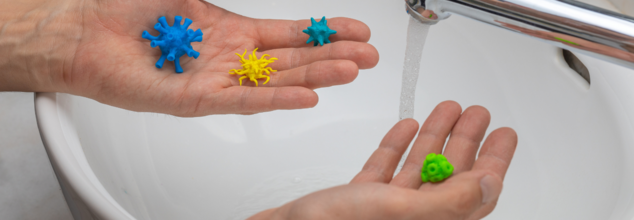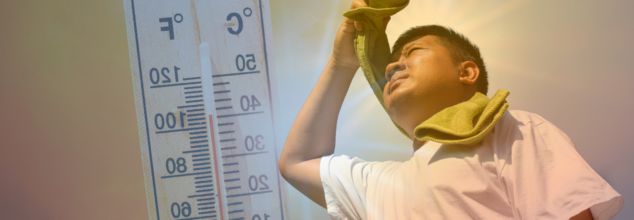- Health Conditions A-Z
- Health & Wellness
- Nutrition
- Fitness
- Health News
- Ayurveda
- Videos
- Medicine A-Z
- Parenting
- Web Stories

(Credit-Canva)
Signs That Reveal You May Be Missing THIS Essential Nutrient Your Body
Going about your day-to-day life can often be hectic. You may try to cram everything you need into a day through meals, activities etc., but that is not possible. Even if you eat healthy foods, it is possible that you experience some deficiency. Often these deficiencies have misleading symptoms or signs that may lead you to think it is nothing serious. That is why it is important to make sure you are eating wholesome and well-rounded meals, as well as getting checked regularly.
Not having enough adequate essential nutrients can cause significant changes to your body. One such nutrient is Iodine. Dr. Eric Berg, popularly known as Dr. Berg on social media, who is a board-certified chiropractor based in xxx, is a well-known YouTube personality who shared his knowledge about Iodine and its deficiencies. He explained that if we don't have sufficient iodine, our bodies cannot produce enough of these vital thyroid hormones, and that can lead to various health issues and affect how our bodies function daily. Therefore, even though it's a trace element, obtaining adequate iodine is actually crucial for maintaining good health.
Signs of Low Iodine
Dr Berg explained that iodine is truly vital for the thyroid gland. This small gland in our neck performs a significant role because it influences nearly every single system within our body. Here are some strange signs of it you may be experiencing:
Outer Eyebrow Thinning
If you notice the hair on the outer edges of your eyebrows starting to get thinner or even disappear, this could be a subtle sign that your body isn't getting enough iodine, which is important for healthy hair growth.
Increased Hair Loss
Losing more hair from your head than usual, like finding extra strands on your pillow or in the shower drain, might be a signal that your iodine levels are low, as iodine helps keep hair follicles healthy and strong.
Hoarseness
If your voice starts to sound rough or hoarse for no clear reason, like a cold, it could be related to your thyroid not working properly due to low iodine, which can affect the vocal cords.
Enlarged Tongue with Indentations
If your tongue looks bigger than it used to, and you can see little dents or scalloped edges along the sides, this unusual change might be a sign that you're not getting enough iodine.
Unexplained Weight Gain
Putting on weight even though you haven't changed how much you're eating could be a sign of low iodine, as the thyroid needs iodine to help control how your body burns energy.
Symptoms Linked to Elevated Estrogen
For women, things like gaining weight around the hips and having periods that are much heavier or more painful than normal might be connected to low iodine and its effect on hormone balance.
Impaired Cognitive Function
If you're finding it harder to remember things, focus on tasks, or solve problems, it could be a sign that your iodine levels are low, as iodine is important for healthy brain function at all ages.
Can Food Improve Iodine Deficiency?
The good news is that most people can easily get enough iodine by just eating a mix of different foods. Lots of common things we eat have iodine in them. For example, milk and other dairy foods like cheese and yogurt are good sources. Eggs also have it. Plus, if you eat fish from the sea, like cod and tuna, and shellfish like shrimp and mussels, those are great ways to get this important nutrient.
Steps Taken To Improve Iodine Intake Of People
The government of India has taken many steps to help people increase their iodine intake. 21st October is recognized as World Iodine Deficiency Day to educate people about its importance.
According to the Ministry of Health and Family Welfare, a decision to iodize all edible salts in India was started in 1986. By 1992 their aim was to completely iodize all edible salt, which they achieved. As of 2024, India produced 65 lakh metric tonnes of iodized salt to meet the needs of the country's citizens.

(Credit-Canva)
Things In Your Home That You May Not Be Cleaning Enough
When it comes to keeping your home clean, people do not leave any stone unturned. Our parents would often nag us to clean our rooms and keep the house clean. While it would annoy us to no end, growing up we understood why they encouraged us to keep the place we live in clean. It's not just about making it look good, but also about protecting it from harmful bacteria and germs.
While your home may be your personal space, it can quickly become a breeding ground for germs. You are also more likely to fall sick due to an unhygienic space as you spend a lot of time at home, including resting and sleeping.
However, while you may clean your floors, your closet and the washroom frequently, there are many unsuspecting items that are not cleaned as often, sometimes not at all. These items are mostly used daily, and do not need to be cleaned daily. As insignificant these may seem, periodically cleaning them is necessary to stop them from becoming breeding grounds for health issues.
Unlikely Things That Get Neglected Being Cleaned
Sponges and Dish Cloths
Before tackling dishes or counters, remember your sponge and cloth can be very unclean. They collect food scraps and messes, creating a damp home for harmful bacteria that soap alone won't eliminate. A study published in the American Society of Microbiology revealed that 49% of kitchen towels have bad bacteria. Boiling your kitchen towels may be a good practice to keep hygiene otherwise you replace them periodically.
Carpets and Rugs
Consider everything tracked onto your floors – dirt, mud, and even tiny waste particles. According to research done by Philip Tierno Jr., Ph.D., a microbiologist and immunologist, carpets are 4000 times dirtier than your toilet seats. Shed skin feeds these germs, and rugs trap allergens and pet dander. Regular vacuuming isn't sufficient; the aim for professional deep cleaning annually to remove hidden contaminants.
Cutting Boards
Your cutting board, used for various foods like veggies and raw meat, can easily spread harmful bacteria if not properly cleaned. According to the North Carolina State University, plastic boards can develop germ-trapping grooves, while wood is harder to sanitize. Using separate boards for different food types and thorough washing after each use are crucial for preventing foodborne illness.
Toothbrush Holders
You diligently brush your teeth, but the storage of your toothbrush matters. Damp toothbrush holders, especially in steamy bathrooms, become ideal breeding grounds for various germs. These accumulate, and touching the holder can transfer thousands of microorganisms. Weekly washing with soap or dishwasher cleaning can help maintain a cleaner storage environment.
Coffee Makers
While you likely wash your mug daily, neglecting your coffee maker can lead to more than just a caffeine boost. Single-serve machines have water tanks where bacteria, mold, and yeast can thrive. Experts advise emptying and drying the tank after each use and descaling the machine regularly to prevent unwanted microbial growth.
Tech Gadgets
Think of the many hands touching your remote, the crumbs in your keyboard, and the constant handling of your phone. These shared devices can be surprisingly unclean, with keyboards harboring significant bacteria. Regular wiping with disinfectant and frequent handwashing are essential to minimize germ transfer from these commonly used items.
Pillows
Prepare yourself; your pillows can be a haven for dust mites, dead skin cells, and bodily fluids over time. Experts liken them to damp sponges that absorb various substances, creating a thriving environment for these unwanted guests. Regular washing every six months, annual replacement, and dust mite covers are recommended for cleaner sleep.

(Credit-Canva)
NHS Warns Of The Unexpected Sign Of Heatstroke, If It Persists For 30 Minutes Its An Emergency
As temperatures rise and warm weather becomes unbearable, it is very important for people to take precautions to protect their own health. Things like applying sunscreen and covering up properly before they leave the house are a must. It also helps to know the symptoms of heatstroke as you will be able to identify it as soon as it happens.
According to the World Meteorological Organization (WMO) 2025 is likely to be one of the three warmest years for global average temperature. This unusual warmth means our bodies might not be fully used to such heat, making it even more important to be mindful of how we're feeling and any potential signs of heat-related illness. Several warnings have been issued globally for people to take proper precautions so that they do not fall victim to the harsh consequences of this heat.
Currently, the temperature in the UK is rising and the National Health Service has issued a warning for people to look out for this unexpected sign if heatstroke. While you may not expect it, signs of heatstroke can appear throughout your body, whether it is in the form of stress and lightheadedness in your arms and legs.
Unexpected Sign of Heatstroke
One lesser-known symptom of heatstroke happens to be cramps in your arms and legs. you might also experience them in your tummy area. So, if you're out in the heat and start to get these kinds of muscle spasms, it could be an early warning sign that your body is struggling with the high temperatures, and you need to take action to cool down and rehydrate. Don't ignore these cramps, especially if they are accompanied by other symptoms of heat exhaustion.
Can Symptoms Related To Heatstroke Be Life Threatening?
The National Health Service (NHS) is highlighting that a condition called heat exhaustion can develop into something much more serious, known as heatstroke, if it's not treated quickly. Heat exhaustion is when your body gets too hot, but it's usually something you can recover from if you take steps to cool down within about half an hour. However, if heat exhaustion progresses into heatstroke, it becomes a medical emergency that requires immediate treatment from healthcare professionals because it can be life-threatening if not addressed promptly. Recognizing the signs of heat exhaustion early is key to preventing it from turning into heatstroke.
Other Symptoms To Be Aware Of
Besides muscle cramps, there are several other important signs of heat exhaustion that you should watch out for when it's very hot. These include feeling unusually tired, experiencing dizziness, having a headache, feeling sick to your stomach or actually vomiting, sweating a lot, and your skin becoming pale and feeling clammy, or even developing a heat rash (though changes in skin color might be harder to notice on brown and black skin). You might also notice that your breathing or heartbeat becomes faster than normal, you have a high temperature, you feel extremely thirsty, and you experience general weakness. It's also noted that children with heat exhaustion might become more irritable than usual.

(Credit-Canva)
Can Your Supportive Sports Bra Cause Back Pain?
Undergarments play a very important role in protecting our health. They not only promote hygiene, but they also reduce the chances of chaffing, infections and keep the sensitive areas dry and prevent any unwanted odor. Most women own several pairs of bras, an undergarment used to support breasts, for different occasions. Sports bras are one such variety that women wear when they are doing active work. These bras are different than a daily wear bra as they are more durable and meant to restrict movement to ensure there are no injuries due to sudden movements.
However, a new study suggests that this restrictive movement may be causing women back pain. The research published in the European Journal of Sport Science suggested that these bras, designed to really hold everything in place, might unintentionally put extra pressure on your spine while you're active.
How Does Movement In Sports Bras Affect Women?
To understand how a bra affected breast movement, researchers observed a woman doing activities like running, to see how it affected her breasts, back and spine movement. To understand the difference of movement in each bra, they ran the same test with no bra, a regular day wear bra and a sports bra. By tracking these movements, the researchers were able to see how each type of bra affected her body's mechanics during the activity. This detailed monitoring helped them understand the potential impact of different levels of breast support on other parts of the body, like the spine.
Understanding the Sports Bra Mechanism
Sports bras are specifically designed to limit how much your breasts move around when you're exercising. This is important because excessive bouncing can be uncomfortable and even cause pain, especially if you have larger breasts. Over time, repeated bouncing without proper support can also strain the skin and ligaments in the chest area. Because of these issues, the focus of many sports' bra designs, especially the newer ones, has been on achieving the highest possible level of breast motion control to maximize comfort and support during physical activity.
The researchers pointed out that when your breasts naturally bounce while you're doing activities like running or spinning, the soft tissues around your chest actually help to absorb some of the force that would otherwise go to your joints and spine. However, a sports bra that's too tight and completely stops this natural bounce might prevent this force absorption. As a result, that pressure could then be transferred back to your spine, potentially causing your back muscles to work harder to compensate, which could eventually lead to pain or discomfort in the back
.
Too Much Movement Restriction Can Cause Issues
It is natural for breasts to have movement when one is working out, while too much movement may hurt, allowing some movement can actually be good. This movement allows the surrounding tissues to play a role in shock absorption, protecting the spine and other joints from some of the impact. When a sports bra is so restrictive that it eliminates all bounce, it might disrupt this natural mechanism. This could mean that the forces generated during exercise, which would normally be partially absorbed by the breasts and their supporting tissues, are instead directly transmitted to the back, potentially increasing the load and stress on the spinal structures and muscles.
© 2024 Bennett, Coleman & Company Limited

